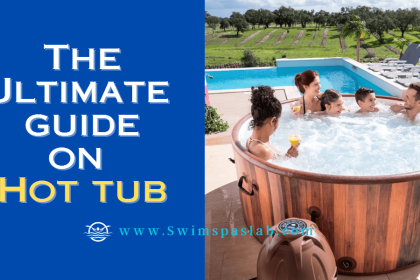Welcome to our extensive guide on hot tubs! If you’ve ever wondered about the benefits, installation process, or maintenance of these luxurious water-filled sanctuaries, you’ve come to the right place. We’ve compiled a comprehensive guide to hot tubs, providing you with all the information you need to make an informed decision. So, let’s dive into the world of hot tubs and explore the many ways they can enhance your life and transform your backyard into a relaxing oasis.
What is a Hot Tub?
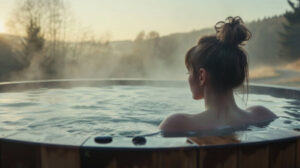
A hot tub is a large tub or small pool filled with heated water, often equipped with jets for water massage and relaxation. They are designed to provide a soothing, spa-like experience right in the comfort of your own home. Hot tubs can be enjoyed year-round, both indoors and outdoors, and are ideal for socializing, relaxing, and even therapeutic purposes.
Types of Hot Tubs
There are several types of hot tubs available in the market, each with its unique features and benefits. Here are the most common types:
Inflatable Hot Tubs:
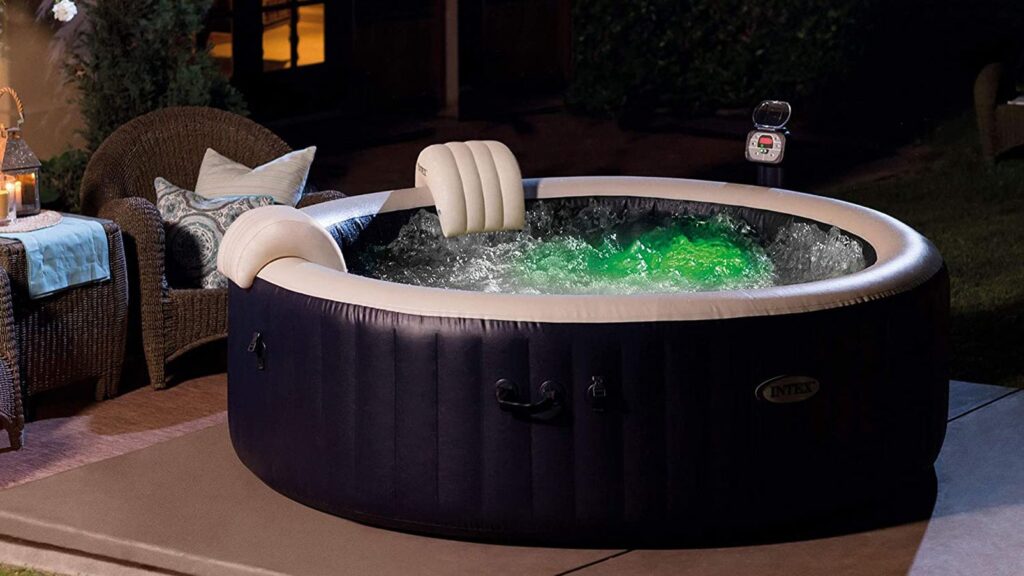
These portable and budget-friendly options are made from durable PVC material and can be easily set up in your backyard or patio. Inflatable hot tubs are perfect for those who want a temporary solution or have limited space.
Acrylic Hot Tubs:
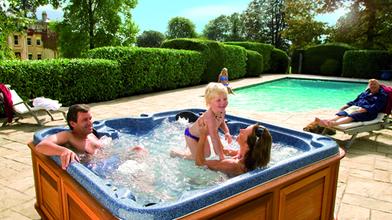
The most popular choice among homeowners, acrylic hot tubs are made from a solid, glossy material that retains heat well and is easy to maintain. They come in various shapes, sizes, and designs, with built-in seating, lighting, and customizable jet configurations.
Wooden Hot Tubs:
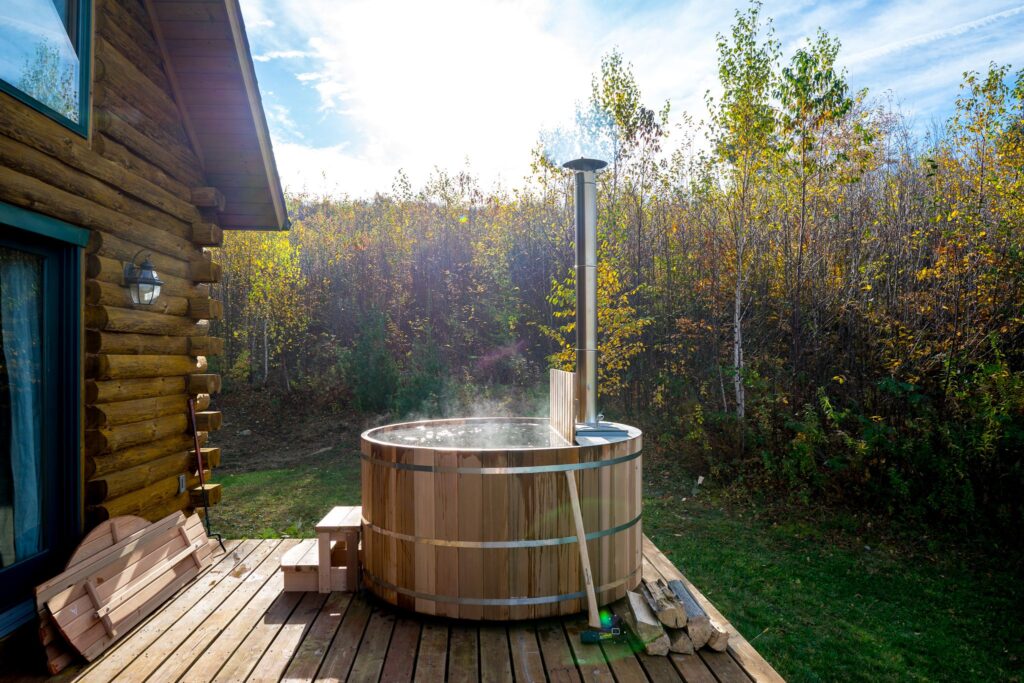
For a more traditional and rustic look, wooden hot tubs are made from high-quality, weather-resistant wood such as cedar or redwood. They may not have as many features as acrylic hot tubs, but they offer a natural, elegant appearance that blends well with outdoor landscapes.
Swim Spas:

A combination of a hot tub and a swimming pool, swim spas provide a space for both relaxation and exercise. They are equipped with powerful jets that create a current for swimming or resistance training, along with a separate area for soaking and hydrotherapy. Swim spa vs hot tub comparison can be found in this Swim spa vs hot tub
This user data table compares various hot tub types and their key features. This will help potential buyers make an informed decision.
| Hot Tub Type | Pros | Cons | Price Range | Capacity | Installation Difficulty |
| Inflatable | Affordable, Portable, Easy to set up/take down | Less durable, Limited features | $300 – $1,500 | 2-6 people | Easy |
| Portable (Acrylic) | Durable, More features, Relatively easy to install | Heavier, More expensive than inflatable | $2,000 – $8,000 | 2-8 people | Moderate |
| Built-In | Customizable, High-end look, Increased home value | Expensive, Permanent, Requires professional installation | $8,000 – $20,000 | 4-10+ people | Difficult |
| Swim Spa | Exercise and relaxation, Space-efficient | Expensive, Requires professional installation | $15,000 – $40,000 | 2-12 people | Difficult |
Please note that the prices listed in the table are approximate and may vary depending on the specific brand, model, and features. This table should serve as a general reference to help users understand the differences between various hot tub types and make a more informed decision based on their needs, budget, and installation preferences.
How Do Hot Tubs Work?
Hot tubs use a combination of heating, water circulation, and filtration systems to create a soothing and relaxing environment:
Heating: The water in a hot tub is typically heated by an electric or gas heater, which maintains the desired temperature (usually between 100-104°F or 37-40°C) for a comfortable soak. Some models also have energy-efficient options like solar heaters or heat pumps.
Circulation: A pump circulates the water through the hot tub, ensuring even heating and preventing stagnant water. The pump also drives water through the jets, creating a massaging effect for users.
Filtration: To keep the water clean and clear, hot tubs are equipped with a filtration system that removes debris and impurities. This usually involves a combination of mechanical filters, which trap larger particles, and chemical sanitizers, like chlorine or bromine, which kill bacteria and other microorganisms.
The Benefits of Owning Hot Tubs
Relaxation and Stress Relief
Hot tubs are the epitome of relaxation. The combination of warm water, soothing jets, and ambient lighting creates an environment where you can unwind and let go of the day’s stresses. Hydrotherapy, or water therapy, is known to help reduce stress levels, lower blood pressure, and ease muscle tension.
Muscle Recovery and Pain Relief
Warm water and jet massages are not only relaxing but also helpful in alleviating muscle soreness and joint pain. Hydrotherapy can stimulate blood circulation, reduce inflammation, and promote healing. It’s particularly beneficial for people with arthritis, fibromyalgia, or sports injuries.
Improved Sleep
Soaking in a hot tub before bedtime can help improve sleep quality. The warm water raises your body temperature, and when you exit the tub, your body begins to cool down. This temperature change signals your brain that it’s time for sleep, helping you fall asleep faster and stay asleep longer.
Social and Family Time
Hot tubs are great for bringing people together. A hot tub can become the focal point for gatherings with friends and family, fostering conversation and bonding experiences.
Hot Tub Installation Considerations
Location Considerations
When selecting a location for your hot tub, consider factors such as privacy, accessibility, and exposure to sunlight and wind. Make sure the site is level and can support the weight of the filled tub. Additionally, plan for sufficient clearance around the hot tub to accommodate a cover, steps, and any required maintenance.
Electrical Requirements
Hot tubs have specific electrical requirements. Most models require a dedicated 220-240V circuit with a GFCI-protected breaker. It’s essential to consult with a licensed electrician to ensure your installation meets all local codes and safety regulations.
Water Supply and Drainage
Ensure you have a nearby water source for filling the hot tub and proper drainage for emptying it. Remember that hot tub water must be treated and disposed of responsibly according to local guidelines.
Hot Tub Maintenance
Water Chemistry
Maintaining proper water chemistry is crucial for a safe and enjoyable hot tub experience. Regularly test and adjust the pH, alkalinity, and sanitizer levels to prevent the growth of bacteria and algae, as well as to protect your hot tub’s components from damage.
Cleaning and Sanitization
Clean your hot tub regularly by wiping down the surfaces, skimming debris, and cleaning the filters. Use a hot tub-specific cleaner and sanitizer to ensure a safe and hygienic environment.
Seasonal Care and Winterization
If you live in an area with freezing temperatures, it’s crucial to winterize your hot tub to prevent damage. This process includes draining the water, cleaning the tub, and protecting the plumbing and components from freezing.
Hot Tub Accessories
Covers
A hot tub cover is essential for maintaining heat, reducing energy costs, and protecting your tub from debris. Choose a cover with proper insulation and a secure locking mechanism.
Steps and Rails
Steps and handrails provide safe and comfortable access to your hot tub. Make sure they are sturdy and slip-resistant.
Entertainment Systems
Enhance your hot tub experience with entertainment options such as waterproof speakers, LED lighting, or even a built-in television.
Consider Eco-friendly Hot Tub Options
Energy-efficient Hot Tubs
Energy-efficient hot tubs are designed to consume less energy and reduce operational costs. Look for models with full-foam insulation, efficient pumps, and low-wattage LED lighting to minimize energy usage.
Solar-Powered Hot Tubs
Solar-powered hot tubs use solar panels to generate electricity, reducing or eliminating the need for grid power. They’re an eco-friendly option for those looking to minimize their carbon footprint.
Saltwater Sanitization Systems
A saltwater sanitization system uses a natural process to generate chlorine from salt, reducing the need for harsh chemicals. This eco-friendly option can also help reduce skin and eye irritation for some users.
Tips for Choosing the Right Hot Tub Dealer
Reputation and Reviews
Choose a reputable hot tub dealer with positive reviews and testimonials. This ensures you receive quality products, professional installation, and reliable customer support.
Product Range and Expertise
A good dealer will have a wide range of hot tub models and options to suit different needs and budgets. They should also have the expertise to guide you through the selection process and answer any questions you may have.
After-Sales Support
Quality after-sales support is crucial for ongoing maintenance and troubleshooting. Choose a dealer that provides reliable customer service, maintenance plans, and a well-stocked inventory of replacement parts and accessories.
Financing and Warranties
Financing Options
Many hot tub retailers and manufacturers offer financing options to help spread the cost of purchasing a hot tub. Explore various plans and interest rates to find the best option for your budget.
Warranties
A comprehensive warranty can provide peace of mind and protect your investment. Look for warranties that cover the shell, plumbing, equipment, and controls, and be sure to understand the terms and conditions.
Frequently Asked Questions
How often should I change the water in my hot tub?
It’s generally recommended to change the water every 3-4 months, depending on usage and water chemistry.
How much does it cost to run a hot tub?
The cost varies depending on the size, type, and efficiency of the hot tub, as well as local energy rates. On average, you can expect to spend around $20-$30 per month on electricity and $10-$15 on water and chemicals.
Can I use my hot tub during pregnancy?
Pregnant women should consult with their healthcare provider before using a hot tub, as high temperatures can be harmful to the developing fetus.
What is the ideal temperature for a hot tub?
The ideal temperature is subjective and depends on personal preference. However, most people find a range of 100-102°F (37.8-38.9°C) to be comfortable.
How do I choose the right size hot tub for my needs?
Consider factors such as the number of people who will regularly use the hot tub, available space, and your budget. A smaller hot tub is suitable for 2-4 people, while larger models can accommodate 6-8 or more.
Can I install a hot tub indoors?
Yes, you can install a hot tub indoors, provided you have adequate space, ventilation, and a suitable flooring material that can withstand moisture and weight. Consult with a professional to ensure your indoor installation meets all safety and building requirements.
What are the health benefits of using a hot tub?
Regular hot tub use can provide several health benefits, including stress relief, muscle recovery, pain relief, improved sleep, and increased circulation. However, it’s important to consult with your healthcare provider before using a hot tub, especially if you have any pre-existing medical conditions.
Are hot tubs safe for children?
Children can enjoy hot tubs under adult supervision and with certain precautions. Make sure the water temperature is lower (around 95°F or 35°C) and limit their soaking time to avoid overheating. It’s also essential to ensure they can safely enter and exit the hot tub and have a clear understanding of the safety rules.
In conclusion, hot tubs can provide a myriad of benefits for relaxation, wellness, and socializing. By understanding the different types of hot tubs, installation requirements, maintenance, and accessories, you can make an informed decision and choose the perfect hot tub for your needs. Enjoy the soothing waters and rejuvenating experience of your very own backyard oasis, and don’t forget to share this comprehensive guide with friends and family who are considering joining the world of hot tubs!
By considering these additional subheadings, you’ll gain a better understanding of the environmentally friendly options available, the importance of financing and warranties, and tips for choosing the right hot tub dealer. This comprehensive guide should equip you with the knowledge and confidence to make the best decision for your hot tub investment, ensuring years of relaxation and enjoyment. Please don’t forget to share this article. Thanks for your time, stay with swimspaslab.com
References :

